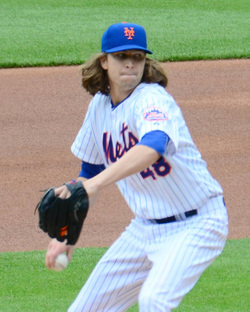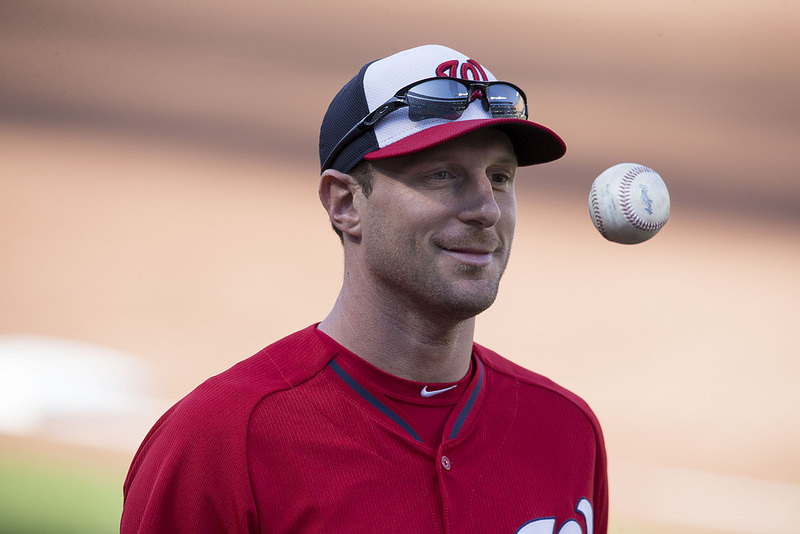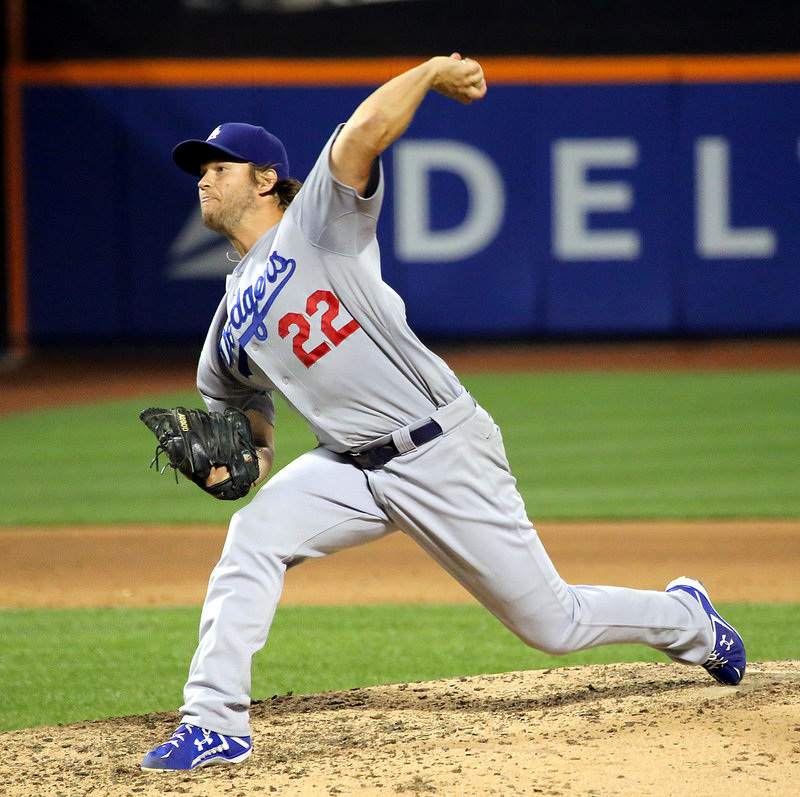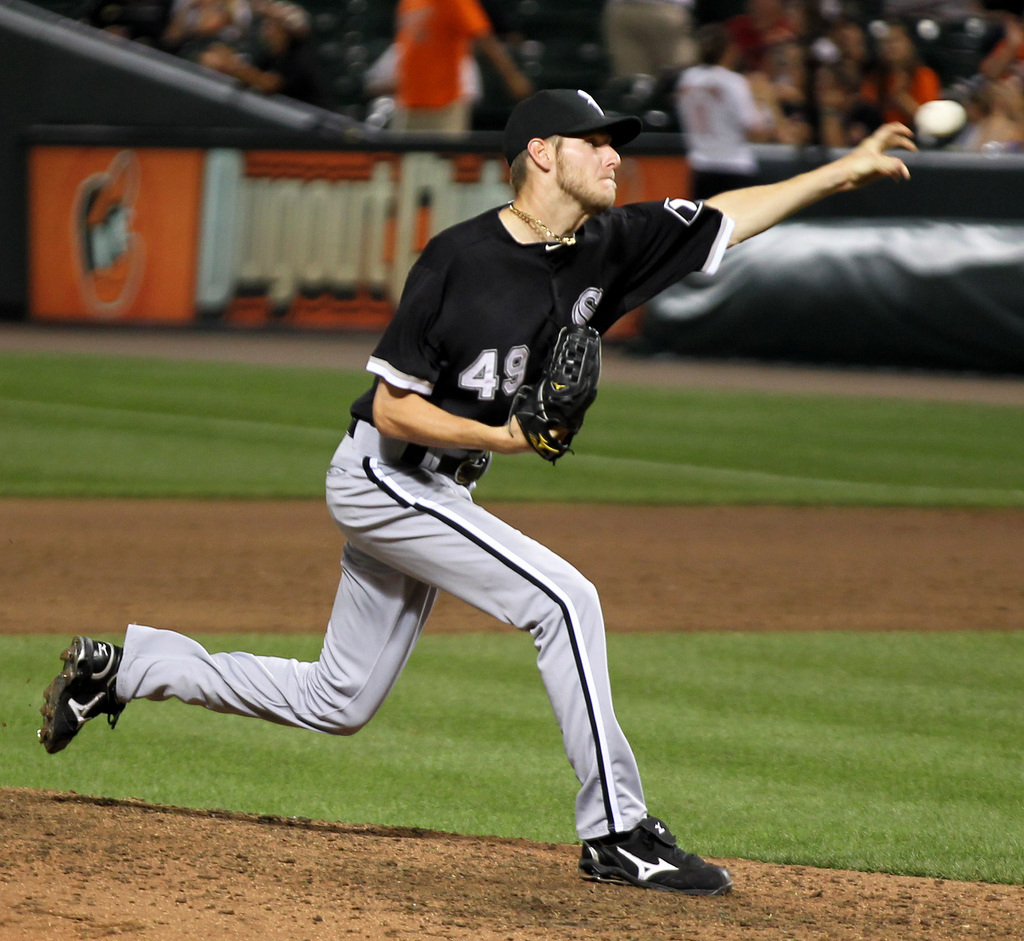Fantasy Baseball Strategies: Starting PitchersJUMP TO FANTASY STARTING PITCHER STRATEGIES: How Important is a Pitcher's WHIP?Are a Starting Pitcher's Wins Overrated? Total Strikeouts vs. K/9: Which is More Important? How to Find the Best Sleepers at Starting Pitcher There are all kinds of draft strategies you can employ when drafting your fantasy Starting Pitchers, but while there are no "magic bullets" in predicting the success of a fantasy pitcher, there are some significant statistical indicators that carry more weight than the other pitching stats.
After the 2014 season, we used our statistical indicators to (correctly) predict that Jacob DeGrom would be a fantasy stud in 2015. Likewise, we used more of our statistical indicators back in 2012 to predict that Max Scherzer was not only on his way up, but that he may actually end up being the best starting pitcher in all of baseball (he went on to win the AL Cy Young Award in 2013 and has been dominant ever since).
|
|
Every year in fantasy baseball, we see new, young pitchers emerge as superstars. We also see pitchers who have been around for a while suddenly figure out how to pitch. But how do you know to draft them before it's too late? Can a pitcher's statistical improvement be predicted? How do you read the tea leaves to see which pitchers are destined to carry your fantasy team to the championship? Which stats - if any - are the greatest indicators of great things to come in terms of fantasy baseball statistics? Read below to see what statistical indicators we use to bolster our fantasy strategies for starting pitchers.
|
Yes. Nothing helps you predict a pitcher's success like his WHIP (Walks + Hits per Inning Pitched). In essence, a fantasy pitcher's WHIP is the number of runners he allows on base due to giving up a base hit or a walk. This is a direct cause-and-effect: if a pitcher lets runners on base, he is giving the other team more opportunities to score. The more runs he gives up, the higher his ERA goes. The more runs he gives up, the less likely he is to get a win. Because of this, a pitcher's WHIP is typically the most-important stat to look at as a potential predictor of success in fantasy baseball. His WHIP affects his ERA and his Wins, all of which are standard fantasy stats. By sticking with a low WHIP, chances are you'll see success with ERA and Wins, too.
If you look at the (qualifying) Starting Pitchers from 2015, there were only 12 with an ERA under 3.00. Of those 12, only one had a WHIP over 1.10 (John Lackey: 1.21). This, my fellow fantasy baseball nerds, is not a coincidence. Furthermore, we're afraid that John Lackey is a ticking time bomb, given that he's 37 years old and his career WHIP is 1.31. But we'll get to that, later. |
|
The point here is that a lower WHIP means fewer base runners given up; fewer base runners means fewer runs; fewer runs given up means a lower ERA, and all that typically means more wins. When you're drafting your starting pitchers this season, focus most of your attention in WHIP. Don't get too enamored with starting pitchers on winning teams, thinking you might score a 20-game winner. A win only helps you with 1 stat,
|
Yes. While wins can be an indicator of a pitcher's worth, the worth of a Win is better translated to the actual game of baseball, not necessarily fantasy baseball. In fantasy baseball, wins are nowhere near as indicative of impending success as WHIP, but still, to get a lot of wins, you can't completely suck, so there is some correlation that you should consider on draft day.
We've all had that argument with some meat-head who says things like, "Yeah, but he's never won a ring, so the other guy's better!" which is, of course, a ridiculous argument made by stupid people. To say that is to say that Trent Dilfer was a better quarterback than Dan Marino because Dilfer won a ring, or that Colby Lewis (17 Wins, 4.66 ERA) was a better starting pitcher last year than Clayton Kershaw (16 Wins, 2.13 ERA) because Lewis won more games. The beauty of this is that we're here to enhance the knowledge of smart fantasy baseball owners who need to put the stupid ones in their place. You smart fantasy geeks will understand the relatively-simple mathematics and analysis of the Brass, whereas the dummies out there will keep sorting pitchers by Wins. Look at the Wins catgeory from last season: the top 8 win getters in 2015 were all solid picks - all pretty predictable, too. But then there's Colby Lewis with his bloated 4.66 ERA (even though his WHIP was passable at 1.24)... and there's the ageless fatass, Bartolo Colon and his 4.16 ERA and 14 wins... Then there's Drew Hutchison, the poster-boy for "don't draft me despite my win total": 13-5 record, but a miserable 5.57 ERA and 1.48 WHIP. This is why we want to warn you of the dangers of drafting a starting pitcher based on the common tenet, "He'll get a lot of wins because he's on a good team." Hutchison was on a great team. He went 13-5 with a 5.57 ERA and a 1.48 WHIP. By contrast, Matt Harvey, arguably the Mets' ace - a team that went to the World Series - went 13-8 (more losses than Hutchison) despite a 2.71 ERA and a 1.02 WHIP. It's clear that Matt Harvey was a dominant fantasy pitcher with his fantasy owners scoring big in ERA and WHIP all season long (Harvey was also better with strikeouts, too). The Bottom Line: for the most part, ignore Wins as a fantasy stat on draft day. Your strategy is to draft the best fantasy starting pitcher you can get your hands on, and that means looking at his WHIP above all else. Now... you have to keep an eye on strikeouts, too, so we're going to let you in on a little draft strategy that involves getting the best bang for your fantasy baseball buck in terms of strikeout pitchers. |
|
|
|
First, a bit of a diatribe: we'd like to know why fantasy leagues don't count K/9 as a standard pitching stat instead of total strikeouts. Starting pitchers pitch every 5 days which means that your team is at the mercy of the blind luck of MLB's schedule. Let's say you draft Clayton Kershaw and he pitches for you on a Thursday. That means you only get his stats for one day. If he pitches really well that day - say he goes 7 innings with 1 ER, a 1.00 WHIP and 9 strikeouts - you can still have your ass handed to you by a crappy pitcher, simply because he has the benefit of pitching twice in one calendar week. Let's say your opponent has a second-tier pitcher... we'll say Bartolo Colon ('cause we like to pick on him) goes on Monday and Saturday. He picks up 1 win (and one loss - another stat that should be kept in fantasy leagues, but I digress), goes a combined 11 innings in his 2 starts, has a 1.40 WHIP, but strikes out 10 guys total. While Kershaw is clearly the better pitcher, even in terms of strikeouts when the numbers are averaged out, he still loses strikeouts. because of the stupid Total Strikeouts category. Kershaw's K/9 were 11.57 to Colon's 8.18.
|
There's only one way to try to prevent falling prey to the luck of your starting pitchers' schedules, and that is to draft your starting pitchers based on K/9 over total Strikeouts. A pitcher's k/9 is more indicative of how you can expect him to perform every time he takes the mound. If you on;y get one start out of a pitcher every week (which is the case in most weeks), you might as well get everything you can out of him. It's tough to compete in strikeouts with any pitcher who has two starts in a given week. And, as a bonus, if you do - or when you do - get two starts out of your top strikeout pitchers (and it will happen as a necessity of the schedule), you're that much more likely to bury your unworthy opponent in total strikeouts. I mean, we still recommend changing your league rules to count K/9 instead of total strikeouts since WHIP and ERA are also calculated as an average, but if you get stuck in a public league that hasn't caught up to that wisdom yet, drafting on a K/9 basis is definitely your best bet.
In fact, you can use K/9 as a great indicator of drafting sleeper picks at starting pitcher, too.
In fact, you can use K/9 as a great indicator of drafting sleeper picks at starting pitcher, too.
|
Don't worry - we'll put together a whole list of the top starting pitcher sleepers, too, but here's a quick list of starting pitcher sleepers to get you started as well as a simple methodology to find them.
Why Draft Sleepers over Proven Starters? |
Here's a Short List of Sleeper Starting Pitchers
|
There's nothing wrong with drafting proven studs at the starting pitcher position so long as you know how to find bargains at the position player spots, but drafting sleepers at the Starting Pitcher position is typically more predictable than other positions. Also, if you're in an auction draft, you're definitely going to need to find those kickass $1, late-round players. After someone else spends $60+ on Clayton Kershaw, you can sneak in and draft a Joe Ross or a Josh Tomlin for $1 - $5.
Position players are going to go for higher prices simply because of their household name recognition, the highlight reels they put together in the previous season (since MLB Network and ESPN love to show the home run-filled highlights over pitching performances), etc., but the position player sleeper spots are also notorious for going bust more than sleepers at starting pitcher. Bargains at starting pitcher are much easier to find, and you have to find 4-6 starters for your fantasy team, as opposed to 4-5 outfielders, 2 catchers, 2 second basemen (if that), etc. You need pitchers no matter what, and you need a lot of them, therefore, finding sleepers at the starting pitcher position is an absolute necessity on draft day. Follow our simple steps above to find a whole bunch of guys who may just carry your fantasy team to - and through - the playoffs to your league championship.
Position players are going to go for higher prices simply because of their household name recognition, the highlight reels they put together in the previous season (since MLB Network and ESPN love to show the home run-filled highlights over pitching performances), etc., but the position player sleeper spots are also notorious for going bust more than sleepers at starting pitcher. Bargains at starting pitcher are much easier to find, and you have to find 4-6 starters for your fantasy team, as opposed to 4-5 outfielders, 2 catchers, 2 second basemen (if that), etc. You need pitchers no matter what, and you need a lot of them, therefore, finding sleepers at the starting pitcher position is an absolute necessity on draft day. Follow our simple steps above to find a whole bunch of guys who may just carry your fantasy team to - and through - the playoffs to your league championship.





